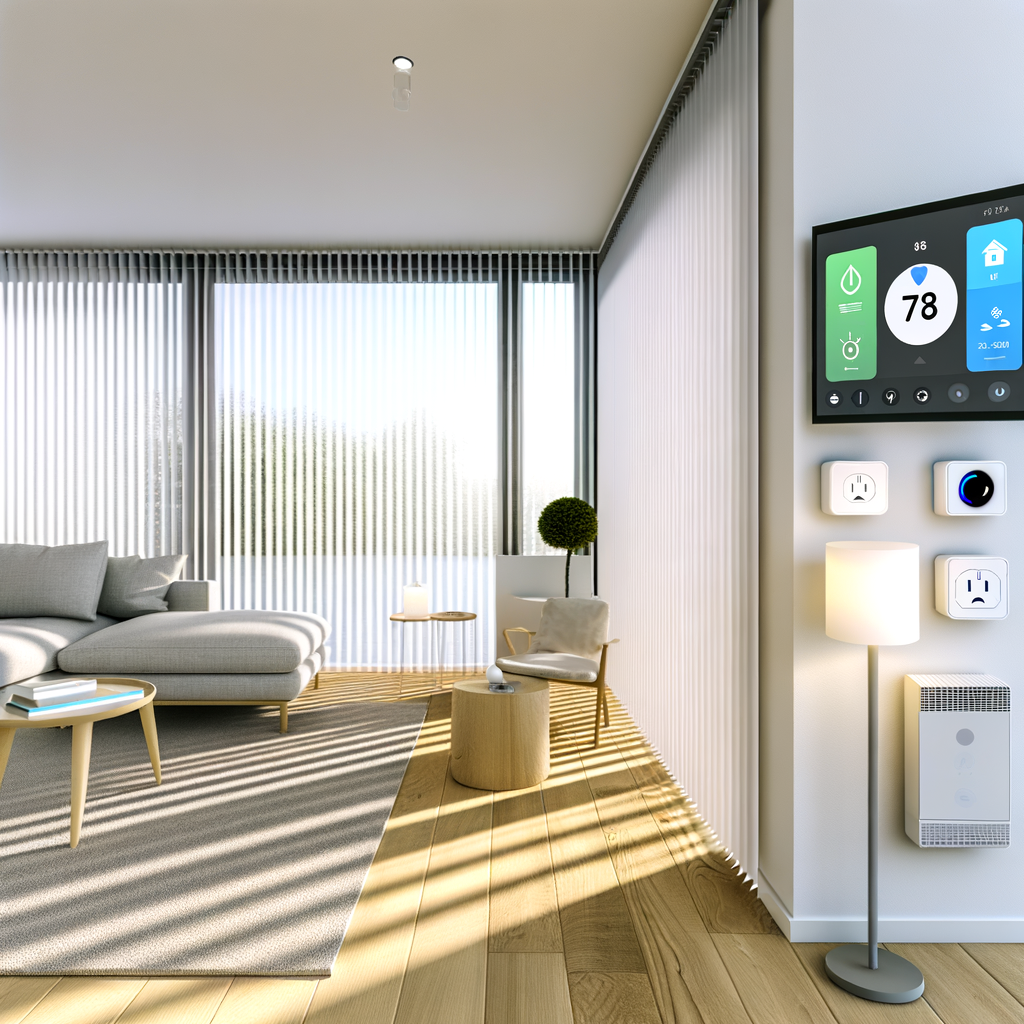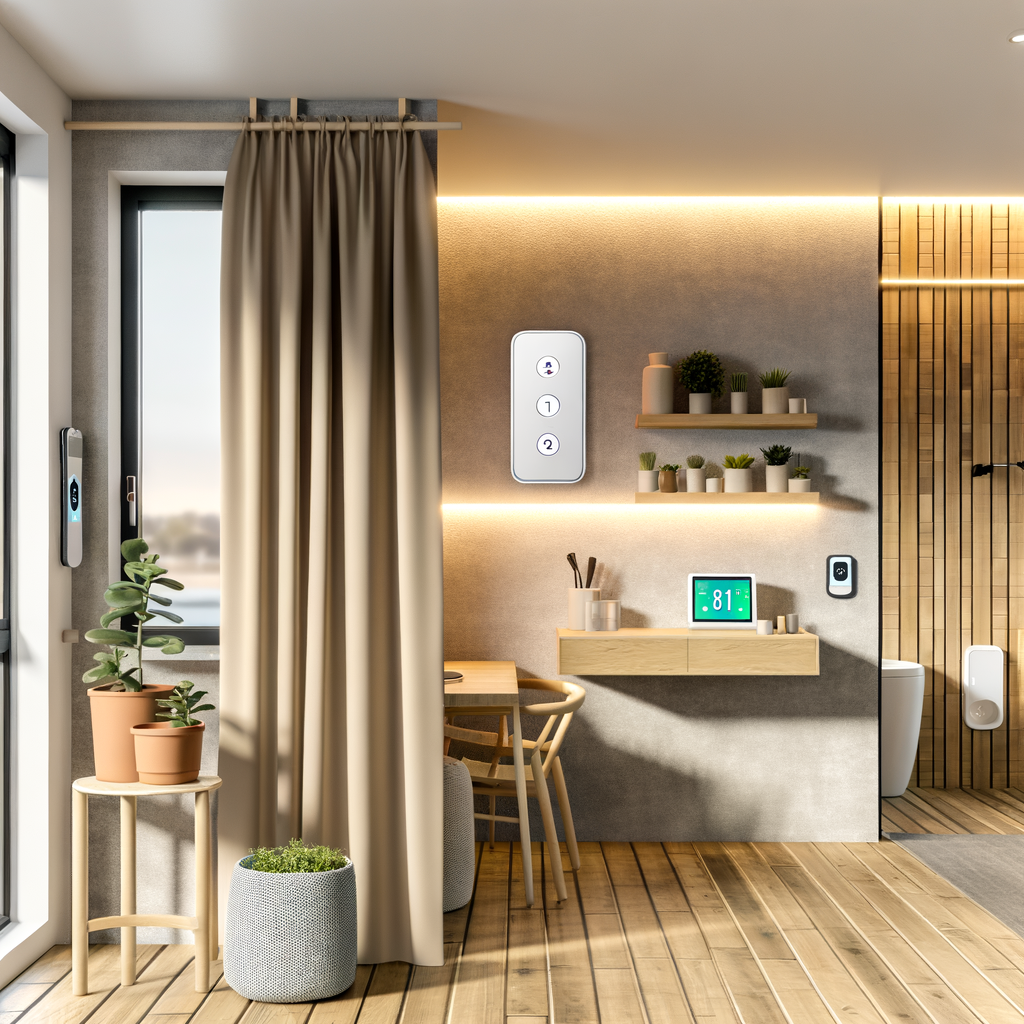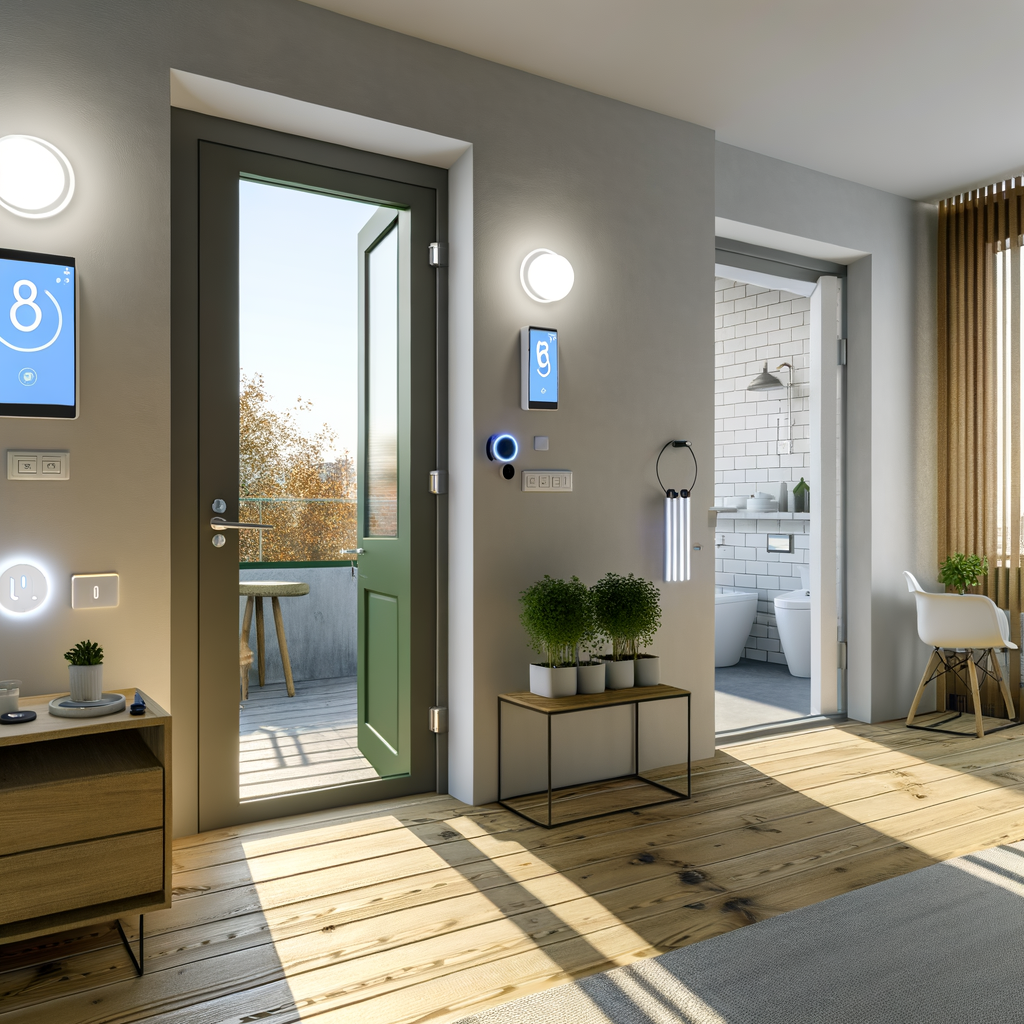How to Turn Your Rental into a Smart, Energy-Efficient Haven — Without Losing Your Security Deposit
Living green and tech-savvy isn’t reserved for homeowners. As a renter, you can significantly improve your home’s energy efficiency and convenience with smart technology — all while keeping your landlord happy and your security deposit safe. In this guide, we’ll show you how to create a smart, eco-friendly rental using renter-friendly solutions that you can install, remove, or take with you when you move.
Why Go Smart and Energy-Efficient in Your Rental?
Smart tech and energy-conscious living offer several perks:
- Lower utility bills — Use energy only where and when you actually need it.
- Increased comfort — Automate lighting, heating, and cooling to match your schedule.
- Convenience — Hands-free controls, automated routines, and compatibility with voice assistants.
- Eco-friendly lifestyle — Reduce your carbon footprint and environmental impact.
- Easy to install and remove — Many solutions are “plug and play” with no damage to your rental.
Understanding Your Rental Restrictions
Before upgrading your rental, check your lease for:
- Alteration clauses — Most leases prohibit permanent changes, drilling holes, or rewiring.
- Permission for devices — Smart light bulbs, plugs, and similar devices rarely violate leases.
- Return conditions — Ensure you can remove upgrades when you move out.
Tip: If in doubt, ask your landlord. Many appreciate energy-saving upgrades — especially if you offer to return everything to its original state!
Top Renter-Friendly Smart Devices & Upgrades
1. Smart Lighting
Lighting can account for up to 15% of your electricity bill. Smart lighting reduces waste and creates ideal ambiance without wiring or tools.
- Smart Bulbs: Replace standard bulbs with WiFi or Bluetooth bulbs (e.g., Philips Hue, Wyze, or Sengled).
- Key features:
- App & voice control (no rewiring needed)
- Dimming & scheduling
- Color changing for ambiance or circadian rhythm
- Compatible with Google Assistant, Alexa, and Apple HomeKit
- Installation: Twist out old bulb, screw in the smart bulb—done!
2. Smart Plugs & Energy Monitors
Did you know idle electronics and “vampire power” waste up to $100/year in a typical apartment? Smart plugs add remote controls and monitoring without an electrician.
- Smart Plugs:
- Automate and remotely control lamps, fans, window ACs, and appliances.
- Set schedules or use occupancy sensing for true “lights off” savings.
- Many models work with Alexa, Google, or Apple Home.
- Energy Monitoring Plugs:
- Track energy use per-device and discover energy hogs.
- Some models let you set usage alerts (e.g., Kasa, Emporia).
- Installation: Just plug it in and connect to WiFi with the app. No tools or damage.
3. Smart Thermostats — Renter Solutions
Traditional smart thermostats (like Nest) often require rewiring, which isn’t ideal for most renters. But there are clever alternatives:
- Smart Thermostats for Window/Portable ACs:
- Use smart plugs for on/off control paired with the AC’s “auto” mode.
- Smart AC controllers (e.g., Sensibo Sky, Cielo Breez) stick near the unit and send IR signals to adjust settings via app or automation.
- Portable Smart Space Heaters:
- Look for built-in WiFi controls or plug a regular heater into a smart plug for remote shutoff.
Note: Avoid hardwiring or replacing the main thermostat unless your landlord expressly approves.
4. DIY Weatherization & Insulation
Air leaks, drafty windows, and poor insulation waste both heat and AC. Simple, removable solutions can keep your rental comfortable and your bills low:
- Removable Weatherstripping: Self-adhesive strips or seals for windows and doors peel off cleanly when you move.
- Draft Stoppers: Place at the base of doors or windows for a no-tools seal.
- Thermal Curtains: Hang with tension rods (no drilling!) to block heat loss or summer sun.
- Window Insulation Kits: Stretch clear film over leaky windows during winter. Removes easily and leaves no trace.
5. Smart Sensors for Energy Savings & Safety
Sensors require no drilling and open new levels of automation:
- Motion Sensors: Use with lights or smart plugs to automatically turn off unused devices or lights.
- Door/Window Sensors:
- Automate lights or alerts (e.g., turn off AC when a window is open).
- Security bonuses — be notified if a window opens unexpectedly.
- Humidity & Leak Sensors:
- Prevent mold, freeze, or water damage. Get alerts to your phone instantly.
6. Smart Shades & Window Solutions
Maximize daylight and minimize heat/cold without installing new windows — all with landlord-friendly products.
- Stick-on Window Film: Add temporary insulation or privacy. No residues.
- Smart Blinds or Shades: Some kits fit on existing blinds and raise/lower automatically based on sun, temperature, or schedule. Choose tension-rod or adhesive-mount models for no damage.
7. Optimize and Automate — Without Extra Hubs
Many modern smart home products use WiFi or Bluetooth and don’t require a costly central hub. Look for “hub-free” labels or compatibility with your preferred voice assistant.
- App Ecosystems:
- Alexa, Google Home, and Apple HomeKit each support hundreds of devices.
- Most smart plugs, bulbs, and sensors can be grouped by room or function in the app.
- Create automations (e.g., “When motion detected at 7 p.m., turn on the living room light”).
Tip: Save money by sticking with a single brand (e.g., Wyze, TP-Link Kasa) for plugs, bulbs, and cameras—their apps control everything together.
How to Install — And Uninstall — Smart Upgrades (Deposit-Safe)
General Installation Tips
- Always use removable adhesives, tension rods, or existing sockets.
- Follow manufacturer instructions — avoid tools unless explicitly allowed.
- Photograph before and after, in case your landlord has questions later.
Deposit-Proof Uninstallation Checklist
- Remove all bulbs, plugs, and smart sensors before moving out.
- Peel off adhesives gently; use a hairdryer if sticky residue remains.
- Patch up minor marks with touch-up paint or cleaning.
- Restore original fixtures or window treatments if you swapped any out.
If You Need to Drill…
- Get express written permission from your landlord first.
- Consider easy-fill kits for any tiny holes when you leave.
Pro tip




